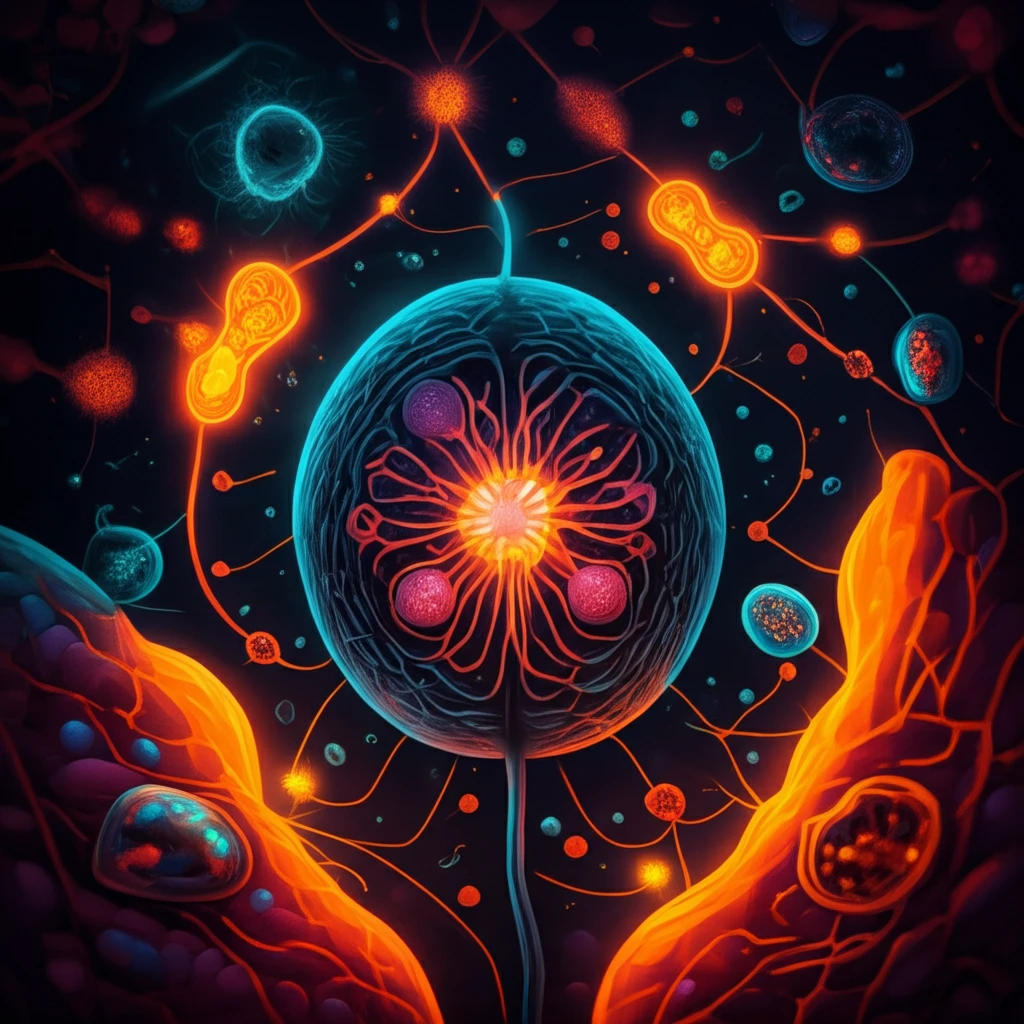
Unlock Your Body's Potential: A Simple Guide to Understanding Bioenergetics
"Demystifying the science of how your cells create energy, and how it impacts everything from your mood to your metabolism"
Biology, once seen as the ungainly sibling to the exactness of mathematics and the predictability of physics, has emerged as a dominant force in science. Its role in safeguarding human health and shaping our understanding of life's origins has propelled it to the forefront of cultural and technological innovation. However, with these advancements come complex questions about the future, particularly regarding ethical considerations.
At the heart of it all lies bioenergetics—the study of how living systems acquire and utilize energy. This field bridges chemistry and biology, revealing the elegant mechanisms that allow our cells to function. But how does this microscopic world of molecular interactions translate into our everyday lives? In simple terms, bioenergetics governs everything from our energy levels to our overall health.
Understanding these processes provides insight into optimizing our well-being. By examining the core principles of bioenergetics, we can uncover ways to enhance our vitality, manage our health, and perhaps even influence the future of biotechnology.
The Power Within: Decoding Cellular Energy

Imagine your body as a bustling metropolis, each cell a tiny power plant working tirelessly to keep things running. Bioenergetics explores the intricate pathways that enable these cells to extract, transform, and utilize energy. At the foundation of this process is the concept of metabolism, the sum of all chemical reactions that occur within a cell or organism.
- Proteins: The workhorses of the cell, proteins catalyze reactions and build structures.
- Lipids: Forming cell membranes and storing energy.
- Carbohydrates: Providing immediate energy and structural support.
- Nucleic Acids: DNA and RNA, which carry genetic information and direct protein synthesis.
Unlocking Your Potential: Simple Steps for Enhanced Energy
Understanding bioenergetics provides a foundation for making informed choices about your health. By focusing on a balanced diet, regular exercise, and stress management, you can optimize your cellular energy production and enhance your overall well-being. These choices support the intricate dance of metabolic processes that keep us thriving. By taking care of your body at a fundamental level, you are promoting a healthier, more vibrant life.
